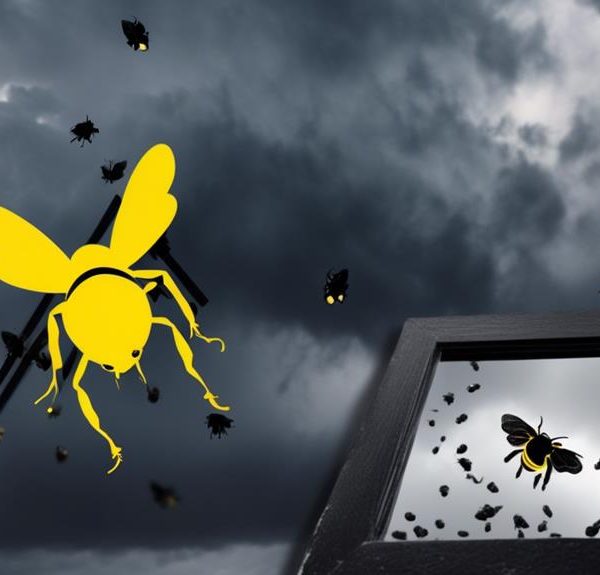Learn the pros and cons of applying beeswax to your dog's paws, a natural solution that may have more to it than meets the eye.
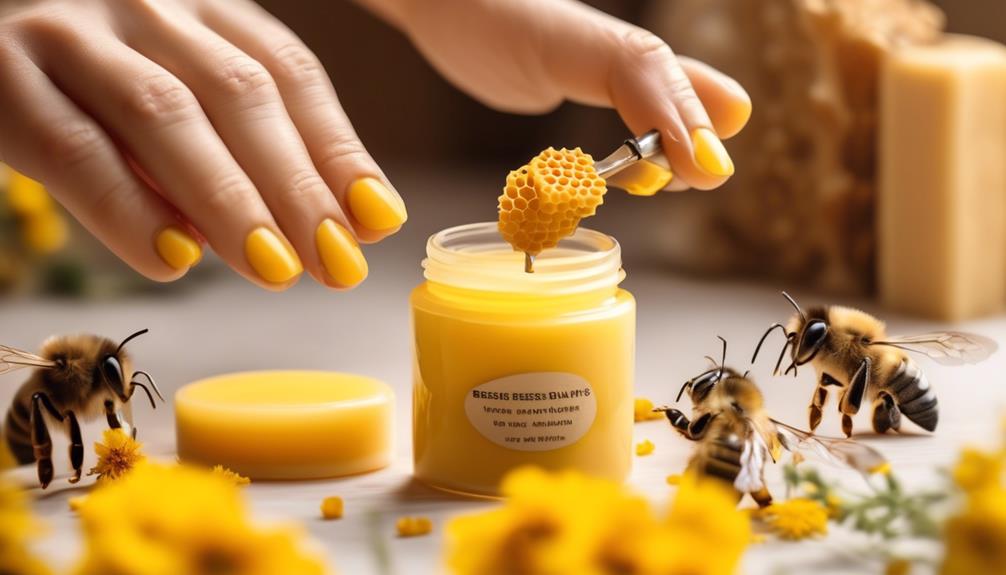
Can You Put Beeswax on Dogs Paws?
Is it truly safe and beneficial to apply beeswax to your dog's paws?
As a dog owner, you're always on the lookout for products that can improve your pet's wellbeing, and you've probably heard that beeswax can be used as a natural paw protector.
But before you jump in and start slathering your pup's paws with this golden substance, it's important to understand the potential effects and any associated risks.
Stay with us as we explore this topic further, arming you with the knowledge you need to make the best decision for your furry friend.
Key Takeaways
- Beeswax is a natural substance that can be applied to dogs' paws to protect them from harsh elements and promote skin health.
- It acts as a moisturizer and helps combat dryness, cracking, and minor cuts or abrasions.
- Beeswax should be applied to clean paws, focusing on cracked or dry areas, and allowed to absorb and dry before distracting the dog.
- While beeswax can be beneficial, it is important to be aware of potential risks such as allergies, ingestion, and overuse, and consider alternative paw care options if necessary.
Understanding Beeswax and Its Uses

Diving into the world of beeswax, you'll discover it's a natural substance produced by honeybees, widely used due to its versatile properties and benefits, especially in caring for your dog's paws. It's a byproduct of the honey-making process, where bees secrete it to build their honeycombs. When harvested, it's purified and made suitable for use in various products.
Beeswax is rich in vitamin A, which is essential for skin hydration and regeneration. It forms a protective barrier on your dog's paws, shielding them from harsh elements like hot pavement or icy sidewalks. It doesn't just offer protection, though; it's also a great moisturizer, helping to keep your dog's paws soft and healthy.
Additionally, beeswax has antibacterial properties, which can help prevent infections in minor cuts and cracks on your dog's paws. It's also anti-inflammatory, making it excellent for soothing any irritation or redness.
You'll find beeswax in many commercial paw balms and waxes. But you can also create your own beeswax-based paw balm at home. With its myriad of benefits, it's no wonder beeswax has become such a popular component in dog paw care.
Effects of Beeswax on Dogs' Paws
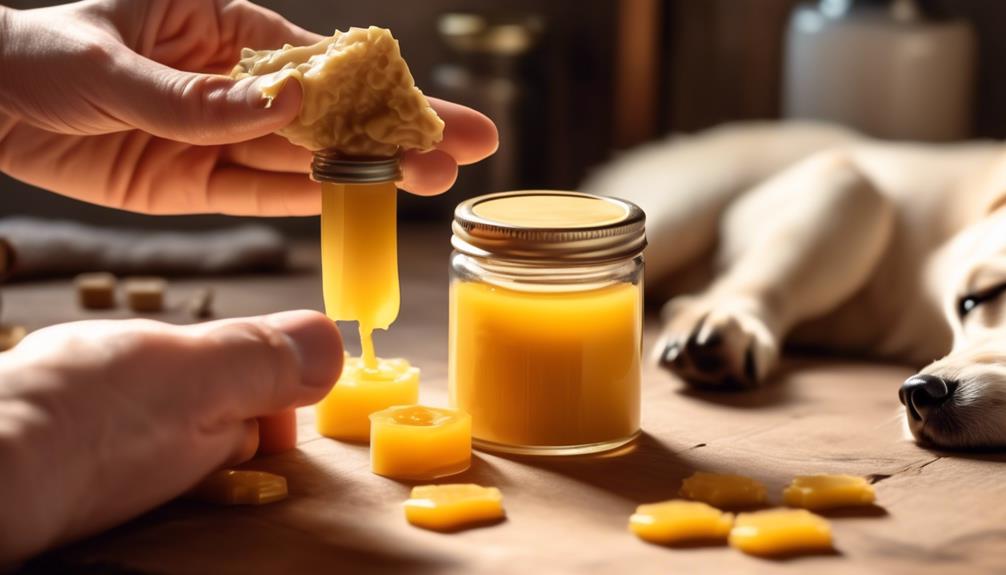
When you apply beeswax to your dog's paws, it acts as a natural barrier, protecting them from the environment while also nourishing and moisturizing the skin. This substance, known for its hydrating properties, can help to combat dryness and cracking, common issues for our canine companions.
Beeswax's protective qualities can shield your dog's paws from harmful elements such as salt, ice, or hot pavement. It forms a semi-permeable layer, allowing the skin to breathe while keeping out potential irritants. This is particularly beneficial during extreme weather conditions, when your dog's paws are more susceptible to damage.
Further, beeswax is packed with vitamin A, promoting skin health and cell regeneration. It can soothe minor cuts and abrasions, speeding up the healing process.
However, be mindful that not all dogs react the same to topical applications. Always monitor your dog after applying beeswax for any signs of discomfort or allergic reactions such as redness, swelling, or excessive licking. If these occur, discontinue use and consult your vet.
Applying Beeswax to Your Dog's Paws
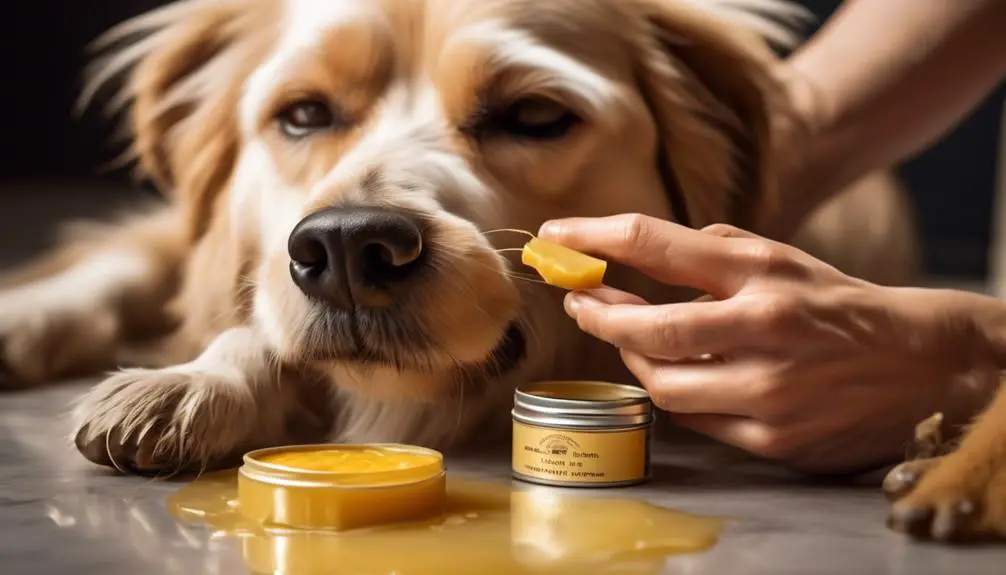
To ensure your dog reaps the benefits of beeswax, it's essential to master the art of its application on your furry friend's paws. First, you'll need to clean your dog's paws thoroughly. Make sure there's no dirt, debris, or foreign objects stuck between the pads. Be gentle to avoid causing any discomfort.
Next, take a small amount of beeswax. It's best to start with a pea-sized amount and adjust based on your dog's paw size. Warm it slightly between your fingers to make it easier to spread. Then, apply it evenly on the paw pads, paying special attention to any cracked or dry areas.
Don't worry if your dog tries to lick it off. Beeswax is safe for ingestion in small amounts. However, try to divert their attention for a few minutes to allow the beeswax to absorb and dry. For the best results, apply beeswax after a walk or before bedtime. This allows the wax to penetrate deep into the pads during resting time.
Regular application of beeswax will help keep your dog's paws soft and protected, making those adventurous walks more comfortable for your four-legged companion. Remember, consistent care is key to healthy paws.
Potential Risks of Beeswax Application
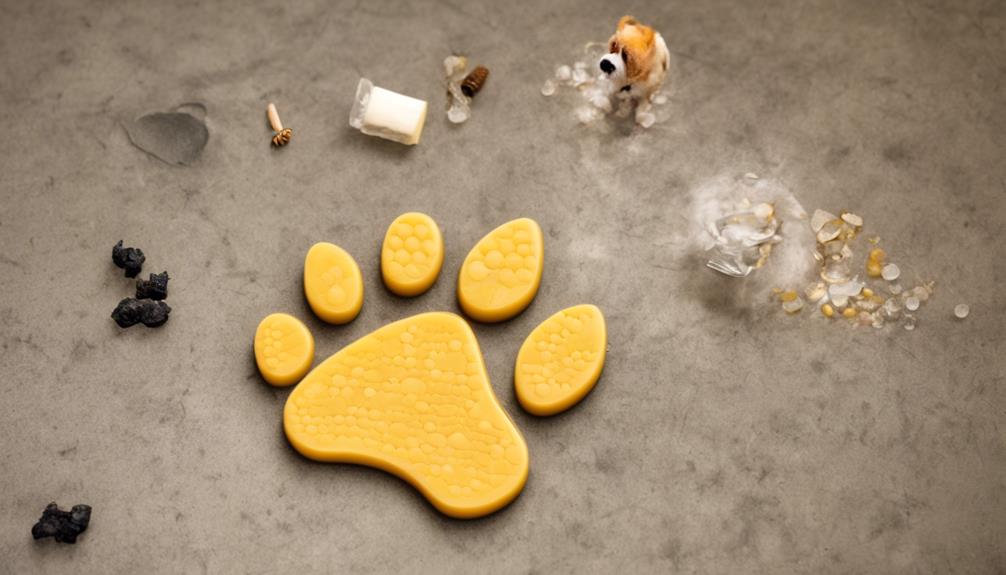
While beeswax is generally safe for use on your dog's paws, it's important to be aware of potential risks and side effects. As a natural substance, beeswax is typically well-tolerated by most dogs. However, like any product, it's not free from potential issues.
The most common risk is an allergic reaction. While rare, your dog could be allergic to beeswax and exhibit symptoms like itching, redness, or swelling. It's also possible your dog could lick and ingest the beeswax. Though it's non-toxic, it could cause an upset stomach or, in large amounts, a blockage.
Another potential risk is overuse. Applying too much beeswax can lead to a buildup on the paws, making them slippery and potentially causing your dog to fall. It can also trap dirt and debris against the skin, leading to infections or other paw problems.
Lastly, not all beeswax products are created equal. Some might contain added ingredients that aren't safe for dogs. Always check the label and consider consulting your vet before introducing a new product to your pet's care routine.
Alternative Paw Care Options for Dogs
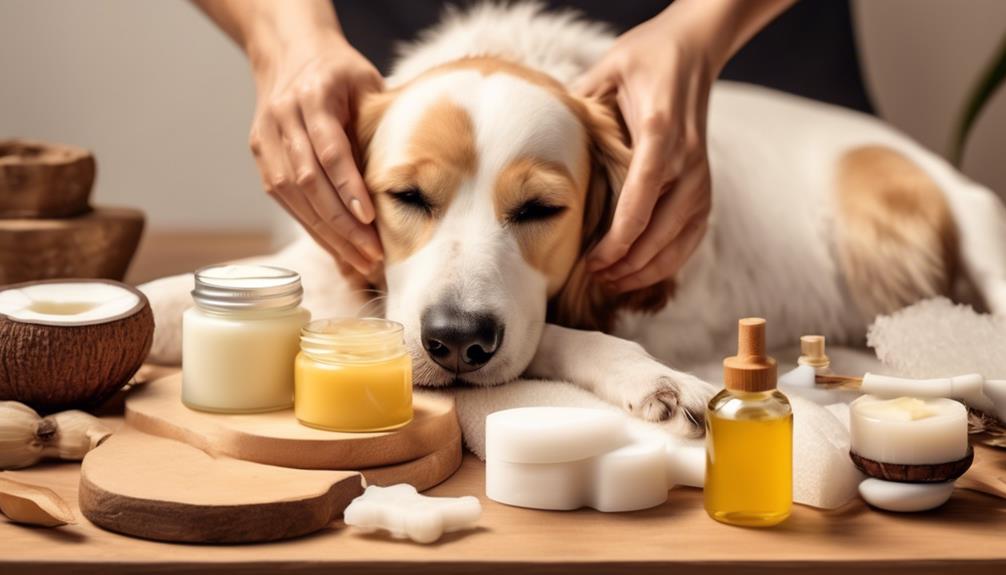
If beeswax doesn't suit your dog's needs, you'll find a wealth of other paw care options available that can keep those furry feet healthy and comfortable.
One popular alternative is coconut oil, known for its natural antibacterial and moisturizing properties. It's easy to apply, just rub a small amount into the pads of your dog's feet and let it absorb.
Another option is a dog-specific paw balm, which often includes ingredients like shea butter, aloe, and vitamin E. These balms are designed to both moisturize and protect your dog's paws from harsh environmental conditions. They're typically thicker than oils, providing a protective barrier against hot pavement or icy sidewalks.
You may also consider dog booties or socks, especially for harsh weather conditions or rough terrain. These products provide a physical barrier against the elements, and can help prevent injuries from sharp objects or harmful substances on the ground.
Lastly, regular grooming and nail trimming are essential for paw health. Long nails can affect your dog's gait and lead to discomfort or injuries. Keeping their paws clean can prevent the buildup of bacteria and fungi, reducing the risk of infections.
Frequently Asked Questions
Can Beeswax Cause an Allergic Reaction in Dogs?
Yes, it's possible for beeswax to cause an allergic reaction in dogs. Like humans, dogs can be allergic to anything, and beeswax is no exception. If your dog starts showing signs of discomfort, itching, redness, or swelling after you've applied beeswax to their paws, it's likely they're having an allergic reaction.
Always perform a patch test on a small area first, and if you notice any adverse reactions, stop using it immediately.
Is It Possible for Dogs to Ingest Beeswax When Licking Their Paws and Is It Harmful?
Yes, it's possible for your dog to ingest beeswax if they lick their paws. However, beeswax is generally considered safe for dogs to consume in small amounts. It's a natural product and non-toxic.
That said, if your dog ingests large amounts, they could potentially experience digestive upset. Always monitor your dog's behavior and consult your vet if you're concerned about any changes.
How Often Should I Apply Beeswax to My Dog's Paws?
You should apply beeswax to your dog's paws as needed, typically once a week. However, if they're walking on harsh surfaces, like hot pavement or icy sidewalks, you might need to apply it more frequently.
Always make sure you're applying a thin layer so it absorbs quickly and doesn't leave a residue.
It's also crucial to monitor your dog to ensure they're not having a negative reaction to the beeswax.
Are There Specific Breeds of Dogs That Benefit More From Beeswax Applications?
Yes, there are specific breeds that benefit more from beeswax applications. Breeds with hairless or short-haired paws, like Greyhounds or Chihuahuas, can get extra protection from harsh environments.
However, it's equally beneficial for all breeds as it forms a protective barrier against ice, salt, hot pavement, and rough terrain.
Always remember, regardless of breed, to apply a thin layer and make sure your dog doesn't ingest it.
Can I Use Beeswax on My Puppy's Paws or Is There an Age Restriction?
Yes, you can use beeswax on your puppy's paws. There's no age restriction for its use. However, it's important you apply it correctly.
Begin by cleaning their paws to remove dirt. Apply a small amount of beeswax, gently rubbing it in. Beeswax acts as a barrier against harsh surfaces and weather, protecting your pup's paws.
But remember, if your puppy has any pre-existing skin conditions, consult your vet before applying anything new.
Conclusion
In conclusion, beeswax can be a beneficial addition to your dog's paw care routine. It offers protection and moisturization, helping to keep paws healthy. However, always apply with caution and monitor for any adverse reactions.
If you're unsure or if your dog has specific health concerns, consider alternative paw care options or consult with your vet. Remember, your dog's wellbeing is your primary responsibility, so always prioritize what's best for them.

